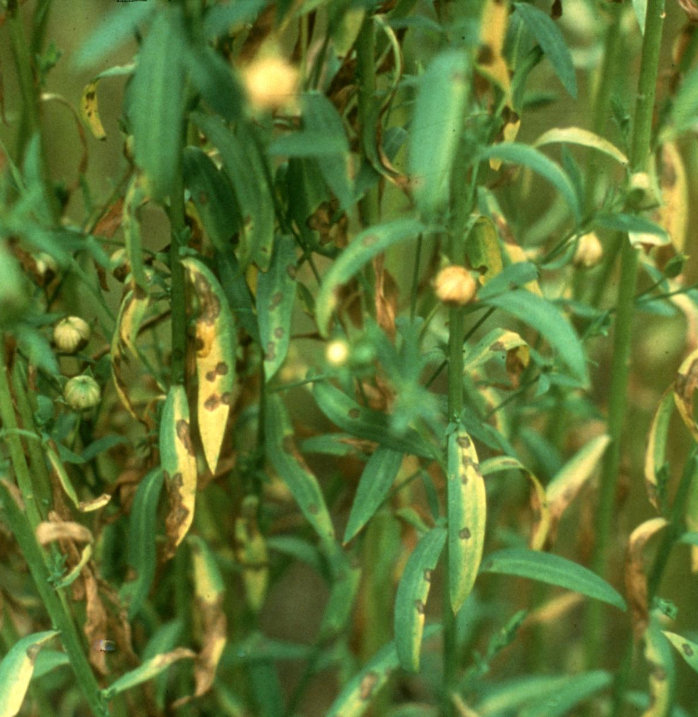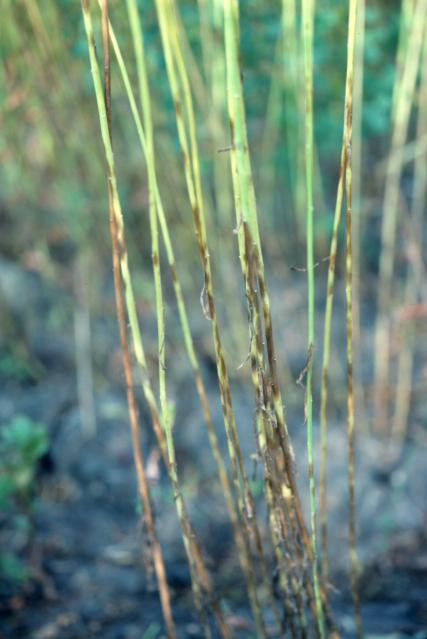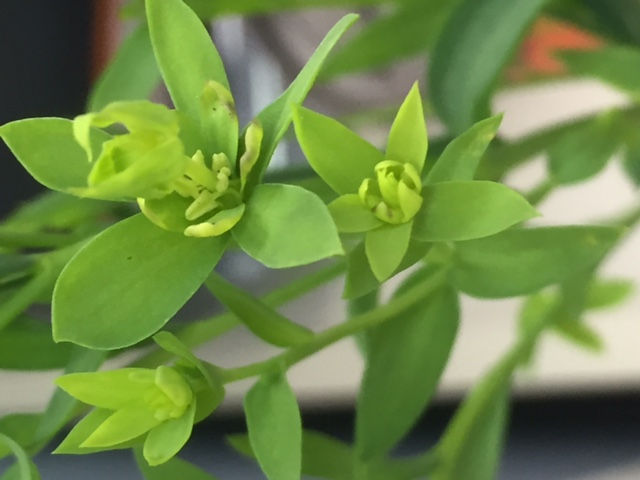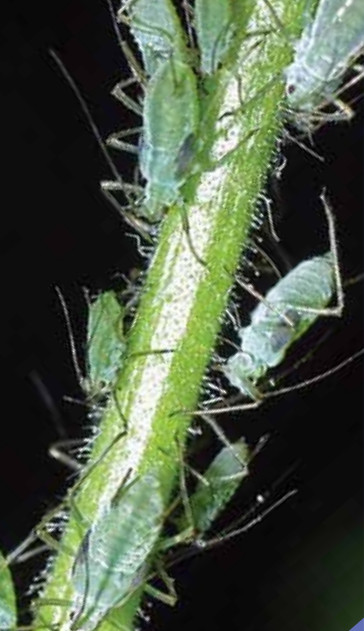Flax TIPS: Disease and Insects
Pasmo Management in Flax
According to Dr. Khalid Rashid, Flax Pathologist – AAFC, Pasmo is caused by the fungus Septoria linicola which is widespread globally, including throughout the flax growing areas of Western Canada. Pasmo has been observed in all flax fields surveyed in Western Canada, with disease severity ranging from traces to 60% of the foliage affected. Yield losses in infected fields have been reported up to 30%.
When to look for
- Seedling stage through to maturity
- Symptoms can be present as early as the seedling stage
- Early season scouting should be focussed on examining leafs for lesions. Banding on the stem is usually only present late in the season (i.e. after a fungicide application should have been applied)
Symptoms
- Circular brown lesions on leaves
- Brown to black bands that alternate with green, healthy bands on the stem
- Pasmo infection can result in defoliation and premature ripening
- Stem lesions often weaken the stem and predispose flax to lodging leading to yield loss
Factors favoring development
- High humidity and moisture
- Lodging favors development due to higher humidity
- Spores are dispersed by rain and wind
- Past flax crops grown on or in neighboring fields increases disease risk
Control
- Seed early
- Use clean, disease free seed
- Use lodging-resistant varieties
- Good weed control to reduce humidity in the stand
- Maintain a crop rotation of at least 3 years
- Foliar fungicide applications at early and mid-flowering protect the crop, reduce disease spread and allows fulfillment of days required for maturity
- Avoid adjacent fields of flax (avoid disease spread from field with flax stubble to new seedlings)
Fungicides
- Headline EC® (BASF) and Priaxor® (BASF): Apply at mid-flower (7-10 days after initiation of flowering)
- Re-check your fields 1-2 weeks after the first application, especially if they have received frequent rain showers and warm weather during flowering. If lesions are observed on new growth are present, consider applying fungicide a second time.
- Field research has shown that several fungicides reduce pasmo by 30-60% and improve yield by 15-25%
Aster Yellows
Aster yellows is a disease caused by a phytoplasma organism that is transmitted by the six-spotted leafhopper to flax, canola and sunflowers. This disease usually occurs in trace levels, but has been detected in some fields in Saskatchewan this growing season. Leafhoppers infected with the aster yellows phytoplasma can move into the Canadian prairies usually from the United States on wind currents. Early summer migration can occur when early spring conditions are warmer than normal.
Symptoms
- Yellowing of the top part of the plant, malformed flowers and stunted growth
- Severity depends on the stage of plant when affected; later the stage the worst the outcome
- Affected flowers produce no seeds so it can be an economical disease
Control
- Seed early to avoid migrating leafhoppers in mid to late season
- There are no registered chemical control products for Aster Yellows
Potato Aphid in Flax
Potato aphid commonly occurs in flax, and can cause decreased yield. Aphids are usually first detected in late June and early July, reaching peak densities late July or early August. Control is not recommended after mid-August, when populations drastically decrease, and due to a preharvest interval of 21 days on control products.
Use a sweep net to determine if aphids are present in the field, if present then:
- Scout from flowering to early green boll stage
- Sample at least 25 plants at full bloom or 20 plants a the green boll stage throughout the field
- Economic threshold is 3 aphids/ main stem at flowering and 8 aphids/main stem at green boll stage
- Insecticides applied at full bloom will control aphids until harvest
- However, there are numerous predators to aphids that may manage populations without the need for chemicals
For information on disease or insect management in flax, visit:
https://archive.flaxcouncil.ca/growing-flax/diseases/
https://archive.flaxcouncil.ca/growing-flax/field-insect-pests/
For information on fungicides or insecticides in flax:
http://www.agriculture.gov.sk.ca/Guide_to_Crop_Protection
http://www.gov.mb.ca/agriculture/crops/guides-and-publications/#gfcp
http://www1.agric.gov.ab.ca/$Department/deptdocs.nsf/all/agdex32







